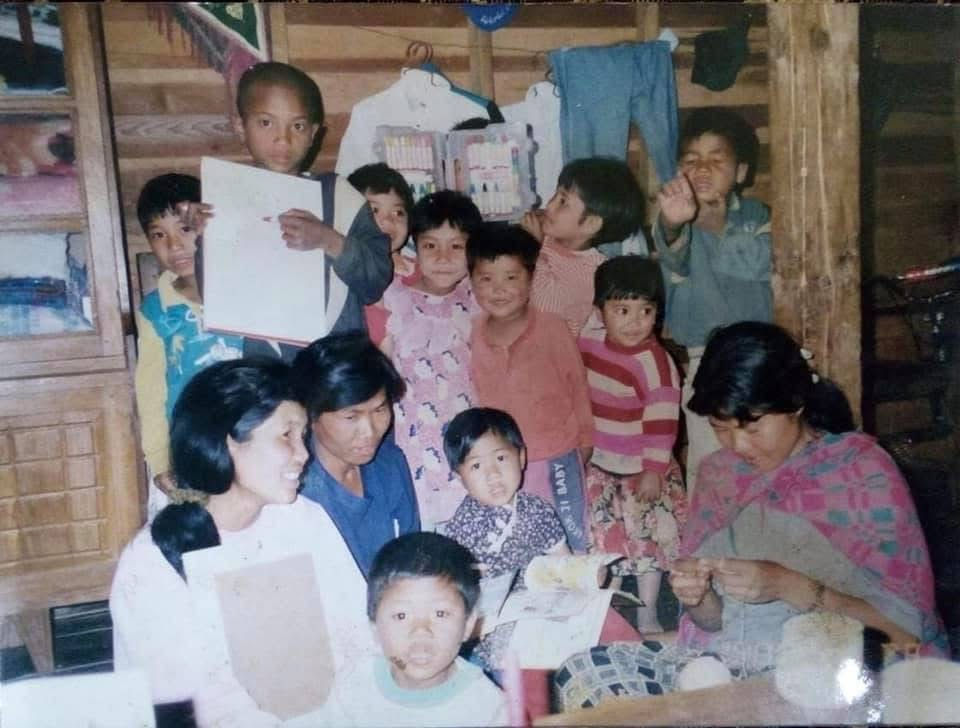Black, Brown, and Minority Communities into a Booming Cannabis Market
- Allison Troutner

- Apr 15, 2022
- 7 min read
Updated: May 22, 2023

Minority Communities Have Always been at the Heart of the Cannabis Conversation. Now, it’s Time to Bring Them Into the Cannabis Market as Leaders
When Le’Shauna “Shauna” Carr-Kennedy was only 19 years old, her mother passed away. Her younger brother was just 16. They didn’t just lose their caregiver, their matriarch, and provider. They also lost health insurance and stability. Her brother lived with ADHD and PTSD; after the death of their mother, they found it hard to get medication, so he started using marijuana to calm his symptoms and anxiety— until he was arrested.
Shauna and her brother grew up in the nineties during the ‘tough on crime’ era when harsh punishments like the three strikes law and mandatory minimums were thought to disincentivize drug use and circulation. Her brother was caught with illegal cannabis twice, the first time with a pound of marijuana. He was placed on probation. When he was 18, he was caught a second time with half a gram of marijuana. He was convicted of a felony and spent 18 months in jail. “He became a career felon because he smokes weed for his PTSD. He smokes weed for his anxiety. That was his home remedy, his treatment,” Shauna explains. Decades later, he still finds it hard to land a job beyond a 30-day temp placement.
Criminal records, stigmas, and long-term consequences of discriminatory law enforcement are the ongoing struggle for many Black and brown Americans. According to a 2019 report by the Human Rights Foundation, the U.S. Has 25% of the world’s prisoners despite being home to only 5% of the population. Of our nation’s prisoners, 20% are in jail for drug crimes, mostly non-violent ones like possession. Shauna’s brother was one of them.
Now cannabis is back and legal in 37 states and bringing in billions of dollars in revenue. However, Black and minority communities are still feeling the impact of the War on Drugs and aren’t represented in new cannabis businesses across the country.
“We are the People Who Took The Beating”
Today, Shauna and her business partner Whitney Kennedy own Dr. Blunt CBD + Apothecary in Indianapolis. Shauna only sells CBD products and herbal remedies within the legal THC limit of 0.3% because cannabis is still illegal in Indiana. In addition to their retail business, Shauna and Kennedy hope to participate in the cannabis industry when— but mostly if— it’s legalized in Indiana. As a woman, part of the LGBTQ community, and a Black person, she faces a lot of stigmas. But what is even more frustrating, she says, is seeing white people open cannabis businesses and succeed in the industry. It’s a slap in the face. “I watched as many of the young men in the community where I grew up were arrested for using those herbal remedies to remedy what they have going on,” she says.
The American Civil Liberties Union released a report in 2020 that states though rates of marijuana use are similar, Black people are 3.6 times more likely to be arrested for the drug than white users. That criminalization creates stigma and harms minority groups, the Human Rights Foundation says. “We are the people that took the beating when it came to the war on drugs,” Shauna points out. “And now marijuana is a miracle drug for everyone else. Our communities have already been using this miracle drug, and it feels bittersweet.”
It’s bittersweet because many Black and brown communities who suffered during the War on Drugs now have opportunities to build legitimate cannabis businesses. However, the cannabis industry doesn’t reflect the real diversity of the people behind it. In 2017, Marijuana Business Daily reported that African Americans owned only 4% of cannabis businesses at the time, and only 5.7% identified as Hispanic/Latino.
How should the U.S. bring Black and brown communities into a booming cannabis industry? Public and private entities have started by addressing layers of stigma and the historical impact of harsh drug policies on communities and families like Shauna’s.
Can We Change Cannabis’ First Come, First Served Industry With State Social Equity Programs?
The legal marijuana market is expected to hit $70.6 billion by 2028, according to Grand View Research’s report on legal marijuana market growth and trends, and some states are raking in the revenue. In 2021, Michigan brought in more than $341 million thanks to revenue from adult-use marijuana sales, according to the Michigan Department of Treasury. But with a large share of the profits going to white businesses, states and other private entities are creating social equity programs.

The idea is that through the programs, States give families and business owners whom the War on Drugs disproportionately impacted priority applications for licenses at a lower cost. For example, Connecticut’s government cannabis information portal shows that a cultivator license fee in the social equity program is only $37,500 compared to a non-social equity fee of $75,000 for the same license.
However, PEW Charitable Trusts reported last year that the programs aren’t going as expected. In Los Angeles, of the first 100 retail store licenses approved, only 11 Black people were included in the number of approved applications. There are also somewhat arbitrary caps on how many social equity licenses can be approved in specific communities.
Several private cannabis companies like Curio Wellness and Eaze have designed national and local social equity programs that provide application-based funding or grants to minority business owners. Despite the difficulties, minority business owners are hopeful that this could make a difference in how Black and brown businesses can enter the legal cannabis market.
“I don’t know that there’ll be any reparations for what many of our families have endured, but I would like to see legalizing [marijuana] and then decriminalizing it and allowing our kids or families or anyone to change their lives with [social equity] programs,” Shauna explains. She also hopes people like her brother, who have struggled to find work after drug convictions, can participate in the industry that changed their lives. “I would love to see a cannabis business where those people that were convicted of it can work there, gain some knowledge, or be the people that they’re grasping some information from. We have a lot to offer. I don’t think it’s fair that we’re left out of the conversation because we know the ins and outs of the cannabis industry.”
Start the Conversation with Black + Brown Communities First
So, what does all this mean in a state where cannabis is still illegal? Not a lot without some conversation and action. Indiana is almost entirely bordered by states that legalized medical marijuana. Illinois, Michigan, and Ohio are creating thousands of jobs and taking part in a thriving industry— one of the fastest-growing in the U.S. WNDU reported that some Indiana politicians say legalizing medical marijuana will mean more jobs for
Hoosiers. Leafly’s 2022 Jobs Report found that the cannabis industry is responsible for 428,059 full-time equivalent jobs as of January. It’s the fifth year that the industry has had job growth of more than 27%.
By getting things in place now, Indiana can catch up with most of the United States. So, what’s the hold-up? It might be that no one in Indiana is talking to the people who pioneered the cannabis industry in the first place, Shauna says. “No one’s asking the right questions…. No one’s asking about minorities,” Shauna says. “There’s going to be a stigma with Black and brown people because we’re scared. We’re scared to even talk about it.” Much of that fear of speaking out is because of the stigma Shauna’s family and community faced growing up in Chicago during the nineties. Bringing minority communities into the conversation means making a safe place to be heard. Then, they can start to share their ideas.
Indiana Minority Business Owners are Ready to Participate Legally in the Industry Their Communities Helped to Build
Shauna knows the Indiana consumer market is anxiously waiting to get its hands on cannabis products locally. She’s already thinking about her business concept when marijuana is legalized in Indiana. “I’d like to manufacture edibles because there’s a huge market here. People want edibles; they want to eat it, they want to drink it, and they want to put it on their salad. You know what I’m saying? They want to do different things with it. There’s a huge market in Indiana already; whether it’s legalized or not, there’s a huge market here of people buying and consuming it.”
Hoosiers are already spending millions of dollars in Illinois and Michigan. If Indiana legalizes marijuana, Shauna’s prepared and knows others in her community are too. “I would recommend that policymakers come to Black and brown communities and talk to us. Mainly because we’ve already seen what it does for our families,” she says. “We’ve already seen what it can do.”
Joanna Jones photographed harvesting at Hudson Growers Alliance in Massachusetts, courtesy of Patrick Rogers Photography. Article written by Allison Troutner.
| Sources: “Report: The War on Marijuana in Black and White.” American Civil Liberties Union, June 2013. https://www.aclu.org/ report/report-war-marijuana-black-and-white. Albert, Samantha. “Politicians Say It’s Time Indiana Legalizes Medical Marijuana.” https://www.wndu.com/2022/03/06/local-statewide-politicians-say-its-time-indiana-legalizes-medical-marijuana/. By, Solomon Israel, John Schroyer, and Jeff Smith. “Chart: Percentage of Cannabis Business Owners and Founders by Race.” MJBizDaily, December 18, 2021. https://mjbizdaily.com/chart-19-cannabis-businesses-owned-founded-racial-minorities/. DePietro, Andrew. “Here’s How Much Money States Are Raking in from Legal Marijuana Sales.” Forbes. Forbes Magazine, June 29, 2021. https://www.forbes.com/sites/ andrewdepietro/2018/05/04/how-much-money-states-make-cannabis-sales/?sh=4ffcc825f181. Karmen Hanson, Alise Garcia. State Medical Cannabis Laws, 2022. https://www.ncsl.org/research/ health/state-medical-marijuana-laws.aspx. “Legal Marijuana Market Size Worth $70.6 Billion by 2028.” Legal Marijuana Market Size Worth $70.6 Billion By 2028. https://www.grandviewresearch.com/press-release/global-legal-marijuana-market Quinton, Sophie. “Black-Owned Pot Businesses Remain Rare despite Diversity Efforts.” The Pew Charitable Trusts, 2021. https://www.pewtrusts.org/ en/research-and-analysis/blogs/stateline/2021/01/15/black-owned-pot-businesses-remain-rare-despite-diversity-efforts. “Social Equity: Cannabis Social Responsibility.” Social Equity | Cannabis Social Responsibility. https://www.nacb.com/social-equity. “The Complete Guide to Social Equity Programs for Dispensaries.” Flowhub. https://flowhub.com/cannabis-social-equity-programs-complete-guide. “The Cost and Consequences of the War on Drugs.” Human Rights Foundation, 2019. https://hrf.org/wp-content/uploads/2019/05/WoD_Online-version-FINAL.pdf. “Treasury: First Adult-Use Marijuana Payments Distributed to Michigan Municipalities, Counties.” TREASURY - Treasury: First Adult-Use Marijuana Payments Distributed to Michigan Municipalities, Counties, 2021. https://www.michigan.gov/treasury/0,4679,7-121-1755_1963-553542--,00.html. “What Are the License Fees?” CT.gov, 2021. https://portal.ct.gov/cannabis/Knowledge-Base/Articles/Adult-use-cannabis-license-fees?language=en_US. Whitney, Bruce Barcott and Beau. “The US Cannabis Industry Now Supports 428,059 Jobs.” Leafly, February 23, 2022. https://www.leafly.com/news/ industry/cannabis-jobs-report.















Comments